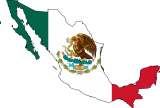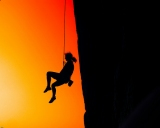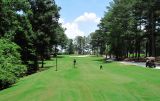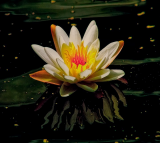- Forum
- General Discussion | Introductions | Off Topic Forum
- Photography General Discussion
- When are you using a prime lens vs zoom?
When are you using a prime lens vs zoom?
-
 Topic Author
Topic Author
- Janos
- Snapobsessed
-
- Nikon D800 and D80
- Followers: 97
- Posts: 443
-
Points:
2230
Post #157235
-

- Vahrenkamp
- Master of the Lens
-
- Nikon D800
- Followers: 287
- Posts: 1605
-
Points:
7635
Post #157324
-

- crystal
- Photo Guru
- Nikon D7000
- Followers: 101
- Posts: 3253
-
Points:
75
Post #157380
-

- photobod
- Paparazzi
-
- Nikon D800 + D300
- Followers: 563
- Posts: 8907
-
Points:
150
Post #157391
www.dcimages.org.uk
"A good photograph is one that communicate a fact, touches the heart, leaves the viewer a changed person for having seen it. It is, in a word, effective." - Irving Penn
-

- Henry Peach
- Apprentice
-
- I currently use a 5DII or Sony Nex-3 most of the time.
- Followers: 50
- Posts: 2925
-
Points:
16
Post #157776
Vahrenkamp wrote: The primes are slightly going to be sharper correct?
In my own personal testing I've found that modern zooms, at least the f/2.8 variety, are often just as sharp as primes. Thirty years ago zooms lenses weren't as sharp as primes, but computer aided design has really changed things.
I use primes when I want to carry a smaller lens or I want to use apertures larger than f/2.8.
-

- MYoung
- Master of the Lens
-
- Sony a7s II, Nikon D750
- Followers: 486
- Posts: 1625
-
Points:
12085
Post #157839
Henry Peach wrote:
Vahrenkamp wrote: The primes are slightly going to be sharper correct?
In my own personal testing I've found that modern zooms, at least the f/2.8 variety, are often just as sharp as primes. Thirty years ago zooms lenses weren't as sharp as primes, but computer aided design has really changed things.
I use primes when I want to carry a smaller lens or I want to use apertures larger than f/2.8.
I was wondering that! You see I just got my first camera a few weeks ago and have been shopping for lenses. I did notice that with many of the prime lenses, they went down to f/1.8 and f/1.4. I didn't notice this with any of the zoom lenses. Is that because of the available space in the lens housing?
-

- TheNissanMan
- Moderator
-
- Canon 7D
- Followers: 34
- Posts: 826
-
Points:
135
Post #157914
-

- Village Clown
- Lone Wolf
- Nikon D300
- Followers: 41
- Posts: 210
-
Points:
948
Post #158143
TheNissanMan wrote: I think it is more to do with the expense and loss of quality of trying to build a zoom which such a low aperture (look at the price of the sigma f2.8 for example). The advantage of primes is that they are built for one purpose...
So true, imagine the cost of a f/1.2 70-200mm? Not only would it be a killer lens, it would cost a small fortune.
-

- Henry Peach
- Apprentice
-
- I currently use a 5DII or Sony Nex-3 most of the time.
- Followers: 50
- Posts: 2925
-
Points:
16
Post #158240
-

- robbie
- Apprentice
-
- D200,665nm D200,720NM D70,D7000
- Followers: 72
- Posts: 2768
-
Points:
25
Post #158242
Man you sure know your stuff,always enjoy your replies.Henry Peach wrote: And remember that f/#=focal length/exit pupil. So a f/1.2 200mm lens would need a max aperture size of over 165mm. By the time you add the lens around the aperture you end up with a lens that has a larger diameter than it is long. Make it a zoom lens, and it's going to be like having a large pail made of metal and glass on your camera.
-

- Henry Peach
- Apprentice
-
- I currently use a 5DII or Sony Nex-3 most of the time.
- Followers: 50
- Posts: 2925
-
Points:
16
Post #158247
robbie wrote: Man you sure know your stuff,always enjoy your replies.
Thanks. I've been obsessed for a while.
- Forum
- General Discussion | Introductions | Off Topic Forum
- Photography General Discussion
- When are you using a prime lens vs zoom?
Latest Reviews
The Fujifilm XT5 is a 40MP mirrorless camera capable of 6.2K video at 30p. With those specs, it’s an ideal choice for photographers needing a camera to pull double duty for imaging and video.
The Canon EOS R100 is an entry-level mirrorless camera introduced in 2023. But just because it’s an entry-level camera doesn’t mean it’s a bare-bones camera. Find out why in this review!
Nikon’s retro-looking Nikon Zfc is anything but retro. Under its classic body is a host of features and amenities that make it a worthwhile compact mirrorless camera for 2024.
The Canon EOS R50 is one of the newest R-system cameras from Canon. Is it worth your money? Find out all the details you need to know in this comprehensive review.
Forum Top Posters
-
1Garbo 4 posts
-
2Overread 3 posts
-
3Street Shark 3 posts
-
4TCav 3 posts
-
5Kenta 3 posts
-
6amirahusse... 2 posts
-
7Scotty 2 posts
-
8Colorado Mike 2 posts
-
9Moe 2 posts
-
10CharleyL 2 posts
Latest Articles
Cinematic photography is an interesting genre that combines photographic and videographic skills along with effective storytelling techniques. The result? Highly impactful images!
Newborn photography requires skill, the right gear, and a lot of patience. This beginner’s guide discusses critical topics that will help you be more prepared for before, during, and after the shoot.
To fill the frame means to expand the footprint of the subject in your shot. Get in close, zoom in, crop the image, or use other techniques to bring the subject to the forefront.
With these simple yet effective beginner photography tips, you can avoid some of the common mistakes beginners make and get improved results with your images.
Urban photography is a genre showcasing features in urban settings. You can photograph people, architecture, mass transit, and many other subjects. Learn how to do so in this guide!
The Nikon D850 might be an older DSLR, but it was ahead of its time when it debuted in 2017. That means it still has plenty of firepower to compete with today’s powerful mirrorless cameras.
The best beginner camera isn’t the same for everyone. That means having choice is of the utmost importance. In this guide, explore five excellent beginner camera options for 2024 and beyond.
Child portrait photography is a unique undertaking requiring special skills and talents to get the best results. Start mastering this photography niche with these essential tips!
















